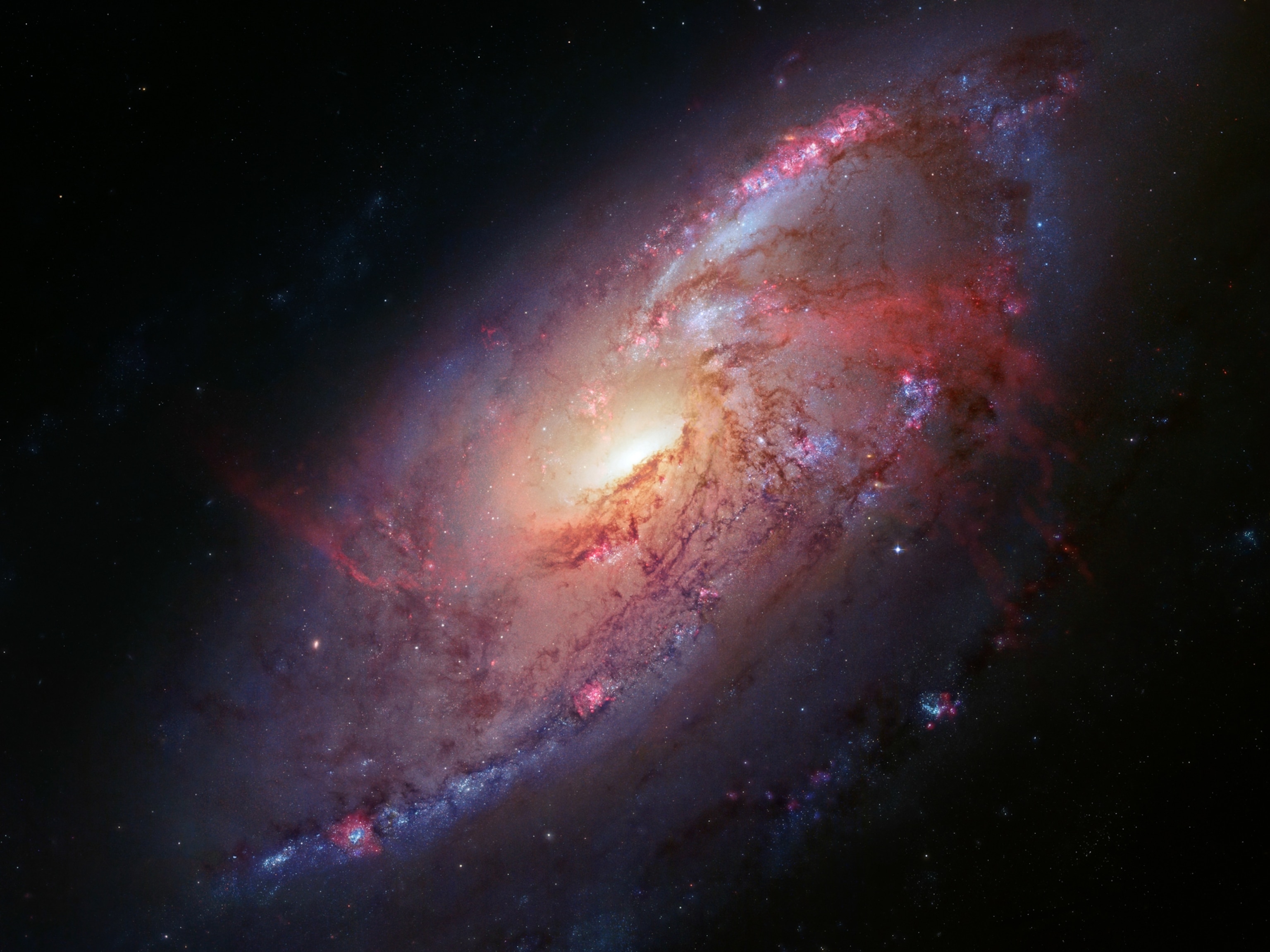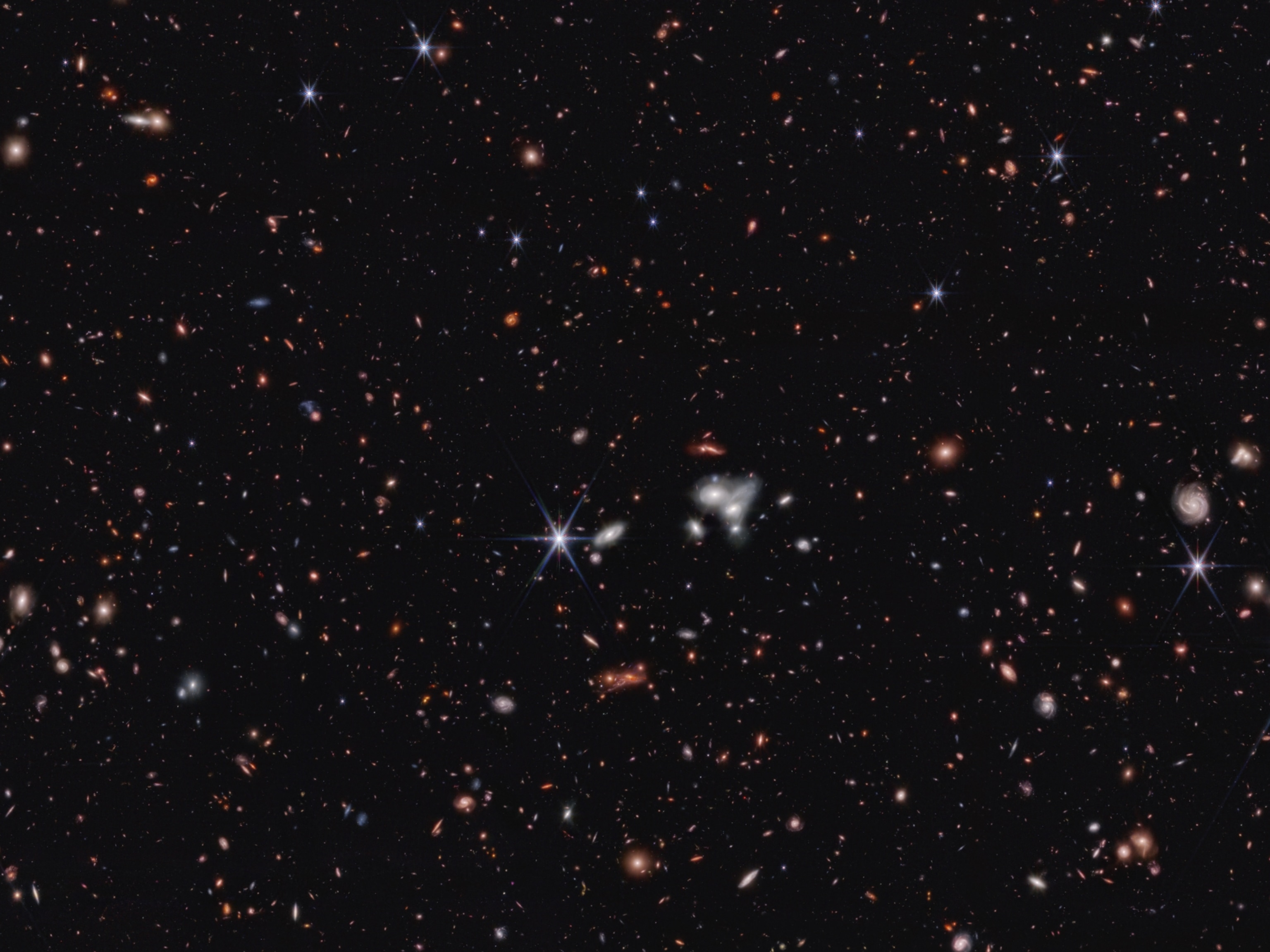
Inside the 124-year-old observatory that birthed modern astrophysics
Home to the world’s largest refracting telescope, the Yerkes Observatory in Wisconsin was so influential that Albert Einstein insisted on visiting. Now you can too.
Inside the dome of Yerkes Observatory, tucked along the shore of Wisconsin’s Geneva Lake, in the town of Williams Bay, it is emphatically 1897. The still-rotating metal half sphere is dominated by an enormous, lovingly polished refracting telescope—a 60-foot-long, six-ton contraption with two 40-inch lenses at one end and an eyepiece at the other. The thing is almost ridiculously fanciful.
If an astronomer or a visitor wants to look through that eyepiece, an operator flips an ancient switch and the dome’s entire circular floor—at 75 feet in diameter, one of the world’s largest elevators—rises 23 feet to give the person access. Then, in a maneuver familiar to any backyard stargazer, the viewer takes hold of the massive telescope with two hands and physically shifts the impeccably balanced device toward the desired point of light.
Ironically, the cost of maintaining all this low-tech equipment is dauntingly high. Today, as tour groups shuffle through Yerkes, it’s easy to forget that the observatory nearly met with a wrecking ball after the University of Chicago closed it in 2018.

They call Yerkes the birthplace of modern astrophysics, but when I visited the facility about two years ago, it looked more like a place teetering on extinction. The monumental telescope was draped in thick, clouded plastic sheeting that movie gangsters tend to use to wrap the bodies of their victims. It was a humbling state for a precision device that was once a magnet for the elite of astrophysicists and theoretical astronomers—Albert Einstein, Edwin Hubble, Gerard Kuiper, and Carl Sagan among them.
But even as I tried to make out the telescope above, Yerkes was being reborn thanks to a $15 million facelift—inside and out—financed by a nonprofit group that took possession of the building in 2020. For the first time in more than a century, the observatory—including its 50-acre grounds—is open for public tours of its working space-science facility.
Over the past few years, Yerkes staff have been preparing for what they expect to be one of the busiest days the institution has ever seen: North America’s total solar eclipse on April 8, 2024. Williams Bay will see 90.2 percent totality, and Wisconsinites who don’t want to drive hundreds of miles to witness complete darkness could find no more compelling a setting for near totality than here beneath these storied domes.
(The best places to see the 2024 total solar eclipse.)
But the glories of Yerkes are not confined to the heavens: The building itself is a thing of beauty. Festooned with elaborate Victorian-era stone carvings, Romanesque arches, and terra-cotta figures, the landmark observatory was created by George Ellery Hale and Charles Tyson Yerkes—two men with very different agendas.


Hale, an astrophysicist, had the then revolutionary notion to establish a facility that housed both an observatory and an academic institution at which physicists and chemists applied their discoveries to new theories about astrophysics. Financier Yerkes, on the other hand, was one of Chicago’s most hated businessmen. He poured money into the observatory to rehabilitate his image, but it didn’t work—and he ended up moving to New York.
Yerkes’s face, however, is depicted on the observatory’s exterior columns—albeit with a sinister smile and devilish horns. “The artists had fun with that,” notes Dennis Kois, executive director of the Yerkes Future Foundation, which inherited the observatory from the university. “Nobody liked Yerkes.” The telescope’s 500-pound lens—cast in France, ground in Massachusetts—made the instrument the biggest ever version of the handheld, two-lens, direct-view telescope used by Galileo in 1609. Because Yerkes’s was one of the first large telescopes designed for photography, its tube needed to rotate with absolute precision to follow star tracks—a feat accomplished by a team of men who turned the gargantuan device one click at a time.
Even after reflector telescopes, which use mirrors to collect and focus light, became the favored tool for space studies, Yerkes’s staff continued to publish influential papers. Its archives hold thousands of research works—including Hubble’s original 1920 doctoral thesis.

In 2018 the university began winding down its Yerkes presence. Astronomers comparing present-day star positions with where they were a century ago still referenced Yerkes’s 175,000 photographic plates, but the halls, once bustling with scientists, fell silent. When the call went out to support the restoration project, the influx of cash from astronomy and architecture enthusiasts across the United States, including many from the neighboring town of Lake Geneva—for nearly 200 years a playground of the Chicago rich—was overwhelming.
“People have always wanted to visit here,” Kois says. That almost mystical appeal persists today, whether visitors are star buffs or not. “There’s something about looking directly into a beam of light that has traveled millions of light-years just to end up at the back of your eyeball.”
Travel tips
Yerkes is less than two hours’ drive from Chicago and Milwaukee. Its guided 1.5-hour tour “Space & Spaces” is offered daily ($43/adult). Other events include concerts and readings. Check program dates and buy tickets at yerkesobservatory.org.
Where to stay
Opened in 1968 in Lake Geneva, Grand Geneva Resort & Spa is a marvel of Frank Lloyd Wright–inspired architecture.
Where to eat
Mars Resort, on nearby Lake Como, is a classic Wisconsin supper club.
You May Also Like
Go Further
Animals
- How can we protect grizzlies from their biggest threat—trains?How can we protect grizzlies from their biggest threat—trains?
- This ‘saber-toothed’ salmon wasn’t quite what we thoughtThis ‘saber-toothed’ salmon wasn’t quite what we thought
- Why this rhino-zebra friendship makes perfect senseWhy this rhino-zebra friendship makes perfect sense
- When did bioluminescence evolve? It’s older than we thought.When did bioluminescence evolve? It’s older than we thought.
- Soy, skim … spider. Are any of these technically milk?Soy, skim … spider. Are any of these technically milk?
Environment
- Are the Great Lakes the key to solving America’s emissions conundrum?Are the Great Lakes the key to solving America’s emissions conundrum?
- The world’s historic sites face climate change. Can Petra lead the way?The world’s historic sites face climate change. Can Petra lead the way?
- This pristine piece of the Amazon shows nature’s resilienceThis pristine piece of the Amazon shows nature’s resilience
- Listen to 30 years of climate change transformed into haunting musicListen to 30 years of climate change transformed into haunting music
History & Culture
- Meet the original members of the tortured poets departmentMeet the original members of the tortured poets department
- Séances at the White House? Why these first ladies turned to the occultSéances at the White House? Why these first ladies turned to the occult
- Gambling is everywhere now. When is that a problem?Gambling is everywhere now. When is that a problem?
- Beauty is pain—at least it was in 17th-century SpainBeauty is pain—at least it was in 17th-century Spain
Science
- Here's how astronomers found one of the rarest phenomenons in spaceHere's how astronomers found one of the rarest phenomenons in space
- Not an extrovert or introvert? There’s a word for that.Not an extrovert or introvert? There’s a word for that.
- NASA has a plan to clean up space junk—but is going green enough?NASA has a plan to clean up space junk—but is going green enough?
- Soy, skim … spider. Are any of these technically milk?Soy, skim … spider. Are any of these technically milk?
Travel
- This tomb diver was among the first to swim beneath a pyraamidThis tomb diver was among the first to swim beneath a pyraamid
- Dina Macki on Omani cuisine and Zanzibari flavoursDina Macki on Omani cuisine and Zanzibari flavours
- How to see Mexico's Baja California beyond the beachesHow to see Mexico's Baja California beyond the beaches
- Could Mexico's Chepe Express be the ultimate slow rail adventure?Could Mexico's Chepe Express be the ultimate slow rail adventure?




